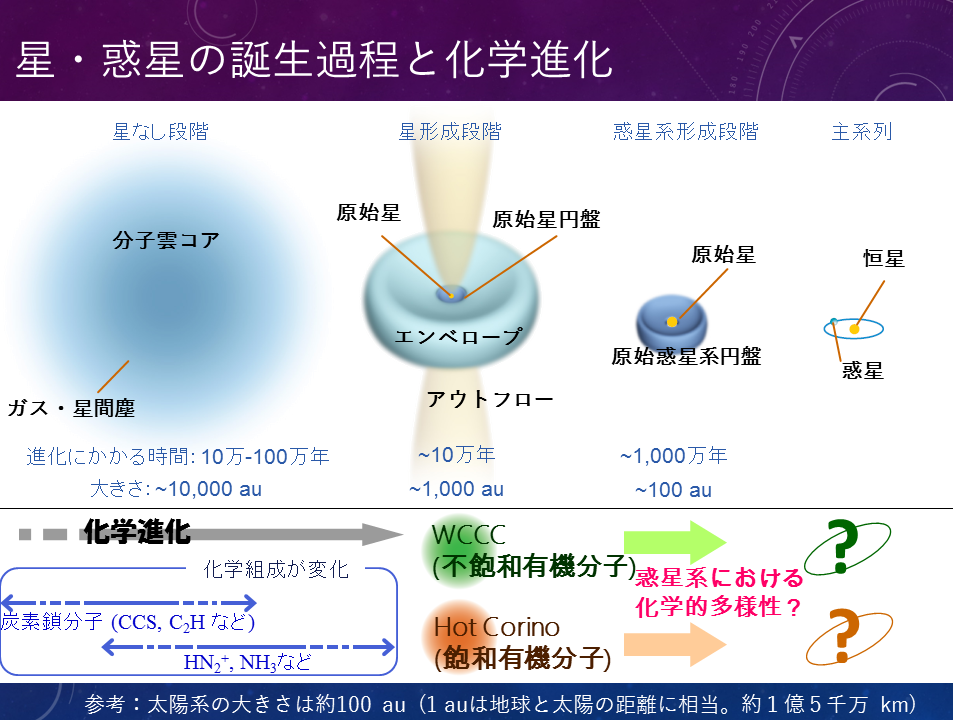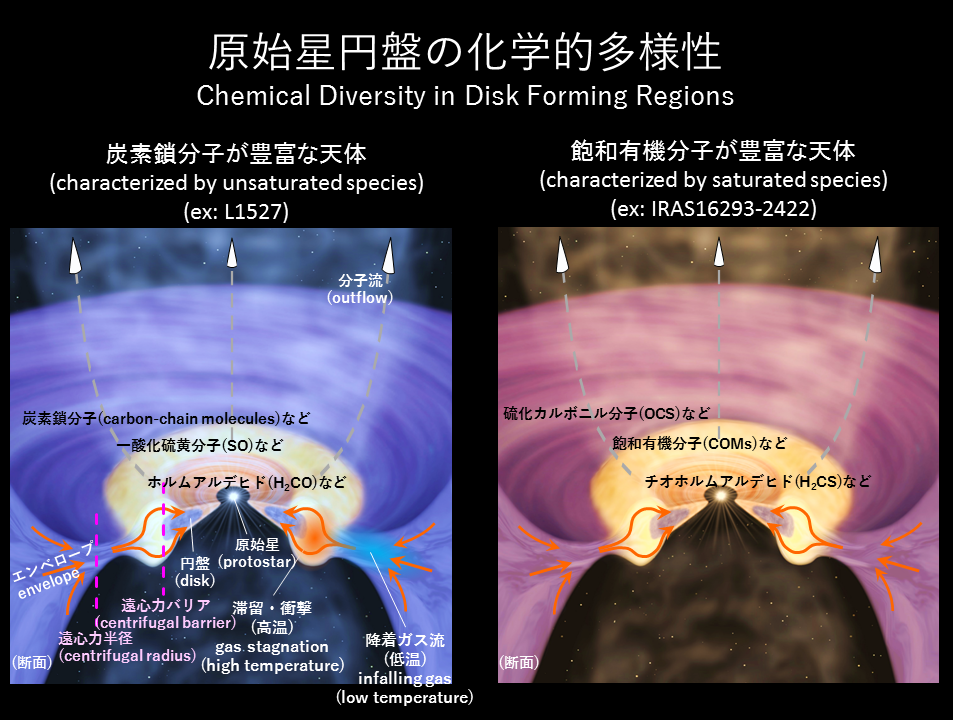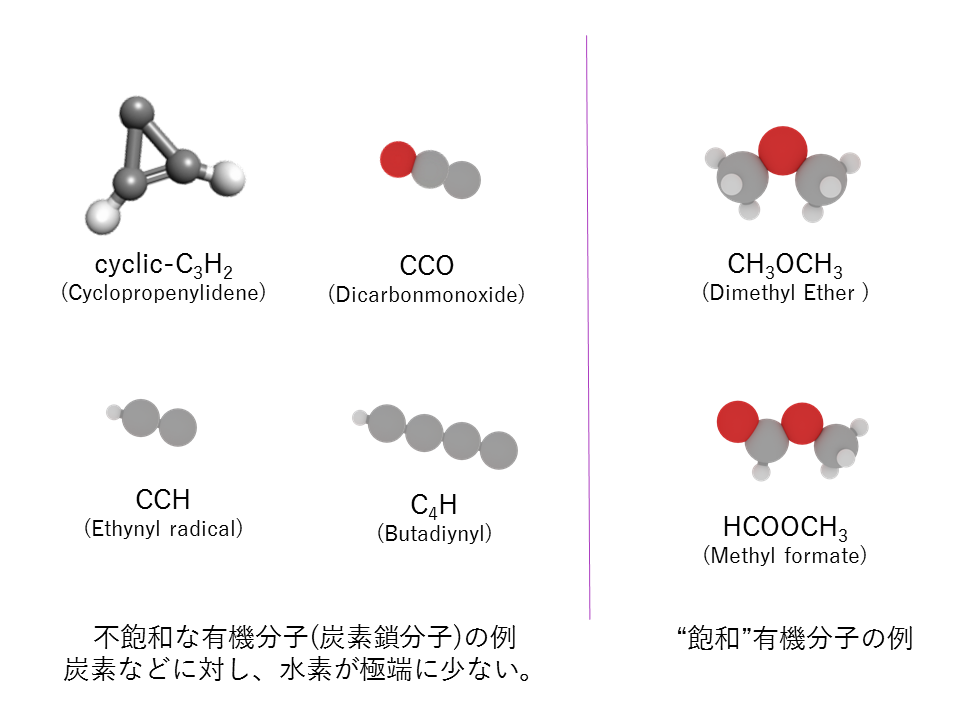研究内容/Research (Under construction)
1. Tracing Chemical Evolution and Diversity from Interstellar Cloud to Star and Planet Forming Regions
Star and planet formation is one of the most fundamental structure-formation processes in the Universe. Physical processes of star and planet formation have widely been investigated as one of the major targets of astronomy and astrophysics by observations in the entire wavelength region during the last few decades. Although a rough outline of these processes has been presented, there still remain many unknowns and missing links. One of them is when the disk structure is formed around a protostar, and how it is evolved into a protoplanetary disk and eventually to a planetary system. At the same time, understanding the evolution of matter from interstellar clouds to stars and planets is also a goal of astronomy. So far, about 196 interstellar molecules have been identified mainly by radio-astronomical observations, and about 1/3 of them are "complex" molecules having 6 atoms or more. This indicates the high chemical complexity of interstellar clouds even in the extreme condition of low temperature (10-100 K) and low density (102-107 cm-3) in comparison with the terrestrial condition, which would ultimately be related to an origin of rich substances in the Solar System. Thus, approaches both from physical and chemical view points are indispensable to bridge star/planet formation studies and planetary science of the Solar System.
In the last decade, it is clearly demonstrated that envelopes of solar-type protostars harbor various "complex" and “saturated” organic molecules (COMs) such as HCOOCH3, (CH3)2O, and C2H5CN in the vicinity of the protostar. This result attracted much attention of astronomers and planetary scientists in relation to the origin of pre-solar organic materials found in meteorites and comets. On the other hand, protostellar envelopes which do not harbor COMs have also been found. Those sources are rich in carbon-chain molecules and their related species instead. Thus, now we know that there are at least two distinct families in chemical compositions; one is a hot corino characterized by abundant saturated COMs, whereas the other is a warm-carbon-chain-chemistry (WCCC) source characterized by abundant unsaturated COMs such as carbon-chain molecules and their related molecules. The chemical diversity would originate from different duration time of the starless core phase of each protostar. On the other hand, the most interesting issue to be studied is how the chemical diversity in the protostellar envelopes is brought into the later stages toward protostellar/protoplanetary disks. Fortunately, such a study is now feasible with high-sensitivity and high-angular-resolution capabilities of ALMA (Atacama Large Millimete/Submillimeter Array). ALMA is a large radio interferometer constructed at the high altitude site (5000 m) in Chile, which consists of 66 antennae in total. It is the most powerful radio telescope ever built, whose sensitivity and angular resolution are at least higher than the other telescopes by 2 orders of magnitude. Its early science operation was started with 16 antennae in 2011 (Cycle 0), and the full operation is coming soon. We will thus investigate the whole picture of chemical diversity in disk forming regions. And, some of fantastic results are already obtained.




